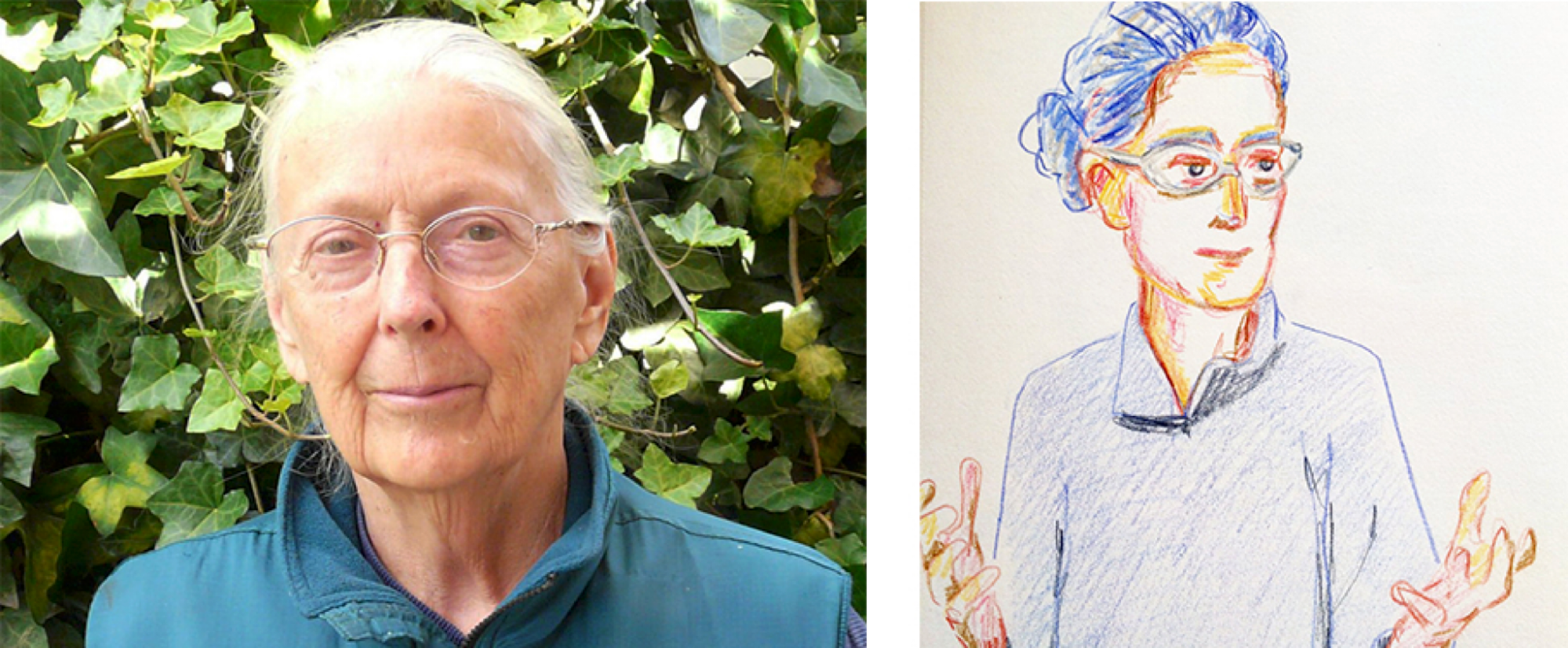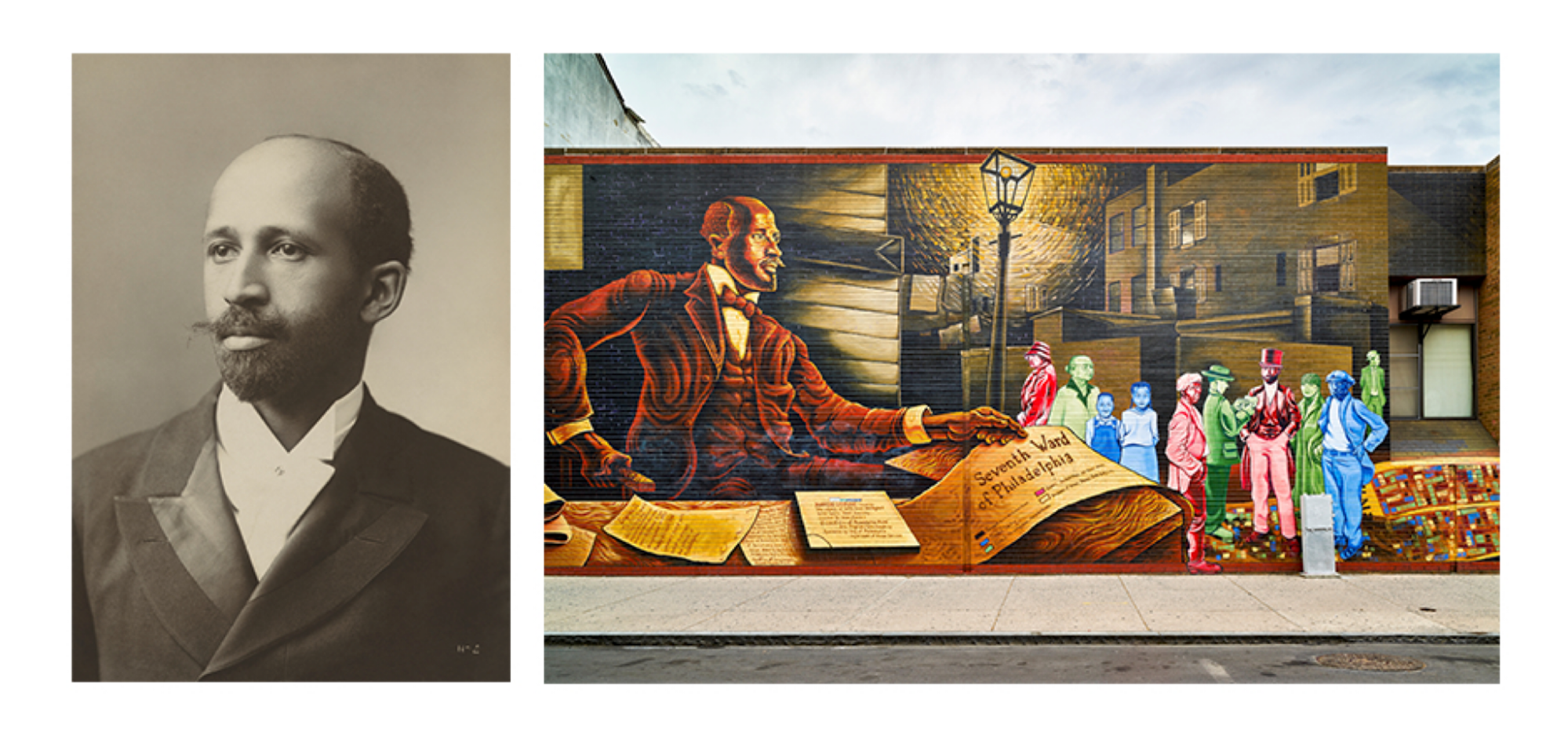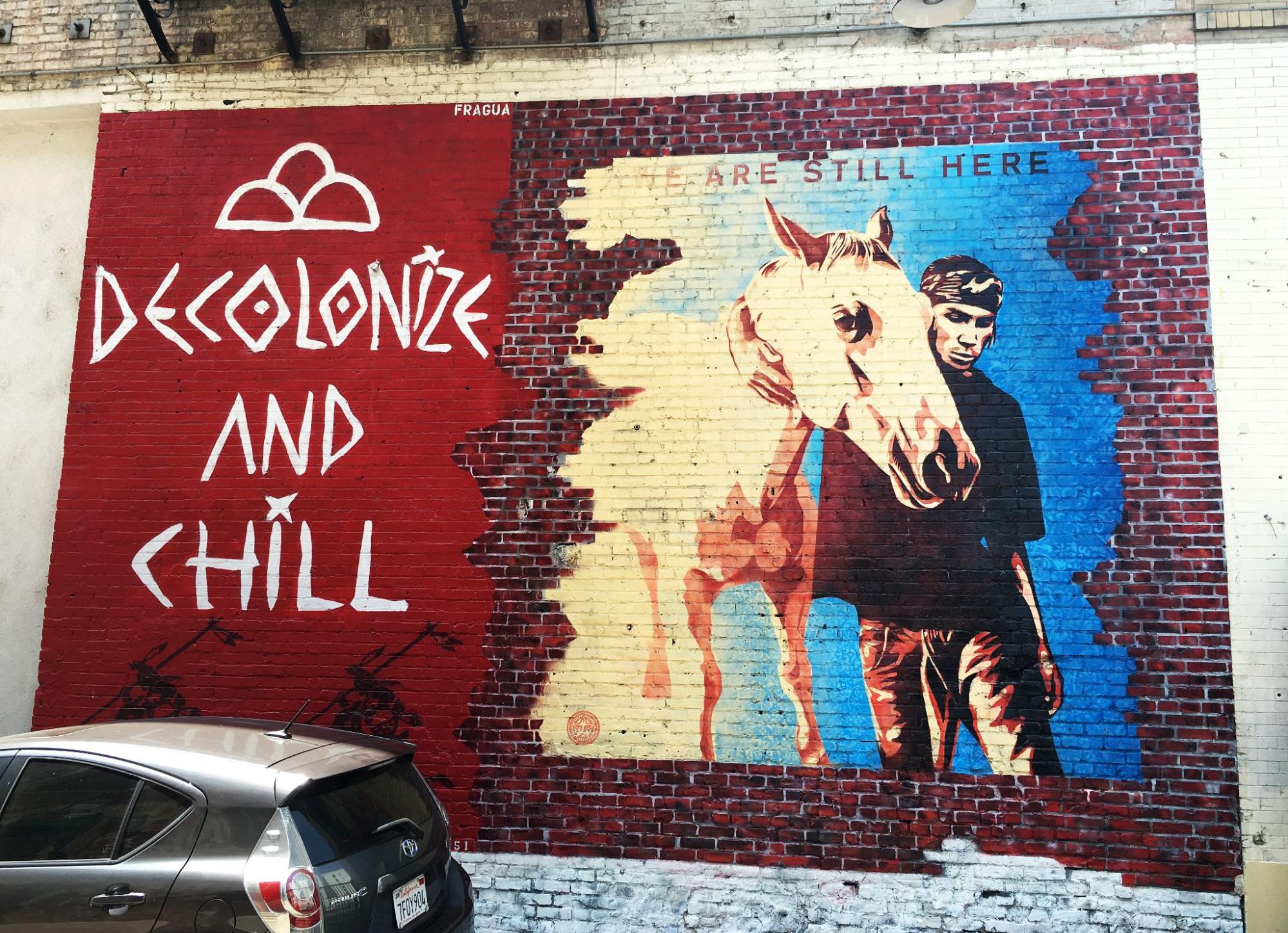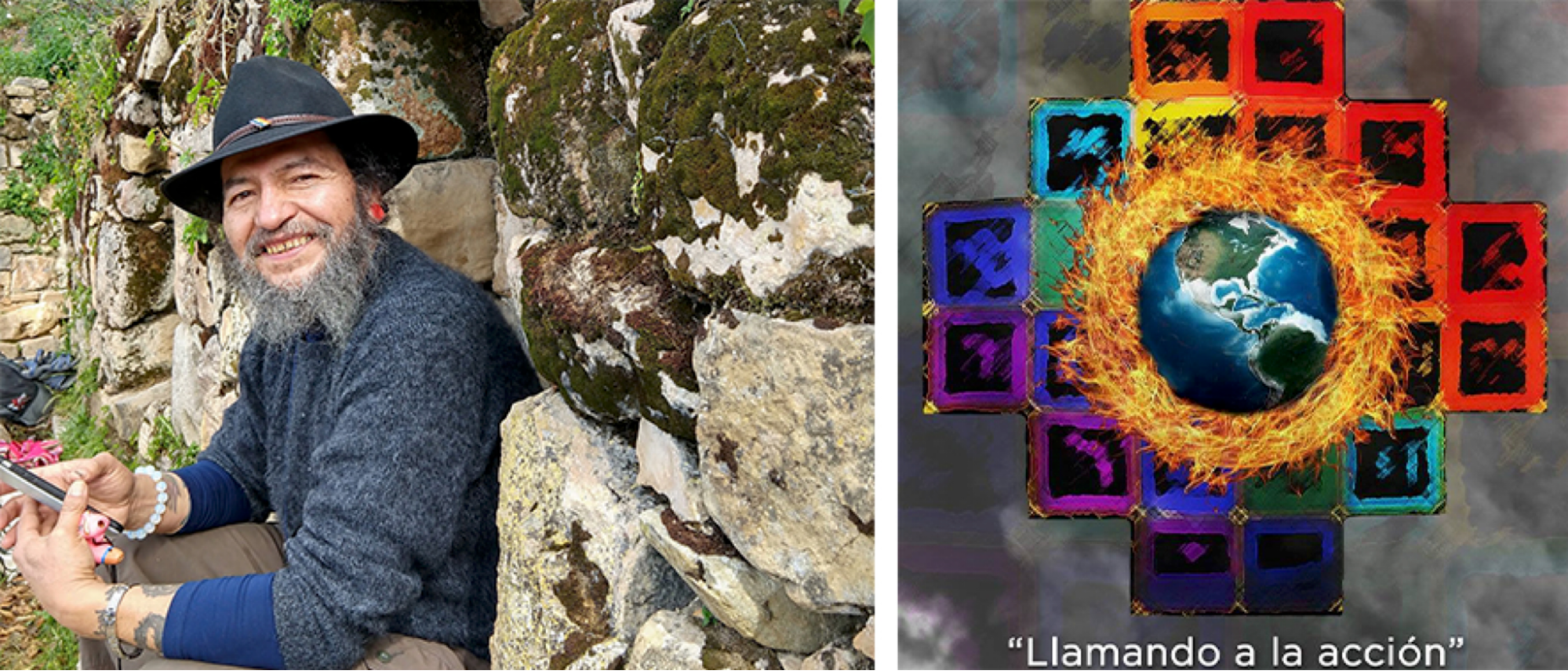3.7 Newer Sociological Perspectives
Since the 1970s sociologists have used a large number of theoretical frameworks that cannot be reduced to functionalism, conflict theory, or symbolic interactionism. Here we’ll discuss four of those perspectives: feminist theory, critical theories of race, postcolonial theory, and decolonization. They each serve to widen our understanding of social interaction in the context of equity.
Feminist Theory
Feminist theory examines inequalities in gender-related issues. It emerges from a context where society is viewed as a patriarchy with uneven distributions of power that fall along sex and gender lines. Patriarchy refers to a society, system, or group in which men dominate women and have the power and authority.
In patriarchal societies, men’s contributions are seen as more valuable than those of women. Patriarchal perspectives and arrangements are widespread and taken for granted. As a result, women’s viewpoints tend to be silenced or marginalized to the point of being discredited or considered invalid.

We can think of feminism as a position that advocates for the equal rights of women and men. There are many different types of feminisms with perspectives that often overlap, but there are three basic commonalities to most feminist theories:
- Gender matters. In other words, gender is one of the most important parts of society; gender is a basis of the structure and organization of the social world.
- Society is arranged so that women are given less status or value (patriarchy).
- Regardless of the causes of these differences, they can and should be reduced or eliminated.
One type of feminism, referred to as standpoint feminism, centers the viewpoint of oppressed individuals or groups. Dorothy Smith helped develop the ideas of feminist standpoint theory (figure 3.36). She saw standpoint theory as a way to examine society from the perspectives of women and as a way to help women understand their worlds (Lorber 2010).
This lens identifies viewpoints as having a partial “truth” and states knowledge itself as situational. From the perspective of this theory, since women’s lives and roles are often different from men’s, women have a different type of knowledge. As a subordinated group in a patriarchal society, women can understand the world in ways that may challenge conventional beliefs.
Some well known feminist theorists include Charlotte Perkins Gilman (1860–1935), Betty Friedan (1921–2006), Simone de Beauvoir (1908–1986), Nancy Hartsock (1943–2015), Judith Butler (1956–), Donna Haraway (1944–), Sandra Harding (1935–), and Joan Acker (1924–2016). We’ll discuss more about feminist theory in the context of religion in Chapter 9.
Critical Theories of Racial Interaction
Stark racial disparities that have persisted in the United States despite decades of civil rights reforms raise structural questions about how racist hierarchies are enforced, even among people with good intentions. Racial formation theory is one perspective that grapples with those questions. It understands race as a construction of society, not a biological reality, as discussed earlier in this chapter. This perspective views society as continually creating and transforming racial categories (Omi and Winant 1994). For example, groups that were once self-defined by their ethnic backgrounds (Mexican Americans, Japanese Americans) are now racialized as “Hispanics” and “Asian Americans.”
The notion of racial formation points to how what we define as race varies and changes as political, economic, and historical contexts. In other words, different race classifications arise at particular places and at particular points in time. And many say it is important to elevate the voices and stories of people who experience racism.

Critical race theory is an intellectual and social framework that examines how racism is embedded in U.S. social life through its systems and institutions (figure 3.37). This perspective emerged from the intellectual and social movements of civil-rights scholars and activists who wanted to examine the intersection of race, society, and law. It agrees with racial formation theory that race is not rooted in biology. Race is a social construct, as we discussed earlier in this chapter. It is something that changes depending on the social and political conditions of the society at a particular point in time.
Critical race theorists would say there are few incentives for those who benefit from the current status quo to eradicate racism. This perspective centers the knowledge and experiences of people of color and relies on an understanding of intersectionality to note how those knowledges and experiences intersect with other identities, such as gender and sexuality. Within sociology, this involves critiquing how sociology has privileged white ideals, culture, and interpretations (Bonilla-Silva 2003; Zuberi and Bonilla-Silva 2008; Omi and Winant 2015).

Critical race theory draws from intersectionality and the work of W. E. B. Du Bois (1868 –1963) (figure 3.38). Du Bois was the first African American to earn a doctorate from Harvard and was a founder of the National Association for the Advancement of Colored People (NAACP). He was invited by the University of Pennsylvania Department of Sociology in 1896 to conduct a survey of Black people living in Philadelphia’s Seventh Ward, the first scientific study of race.
The work of sociologists Michael Omi (1951–), Howard Winant (1946–), Eduardo Bonilla Silva (1962–), and Joe Feagin (1938–) also aligns with this framework. We’ll discuss more about critical race theory in the context of religion in Chapter 9.
Postcolonial Theory
In Chapter 1, we introduced the longstanding French occupation of Algeria. If we fast forward to 1954 to 1962, the story evolves with the Algerian War of Independence—one of the most monumental wars of the anti-colonial period. It was led by the Front de Libération Nationale (Hagemann n.d.). After World War II, people in many European colonies in Africa and Asia began rising up and challenging their colonizers. This led to the dismantling of European empires. Against this backdrop, postcolonial theory emerged. Generally, postcolonial theory explores colonial relations and their aftermath, and how those relations have been created.
Postcolonial theory challenges the theoretical frameworks of mainstream U.S. sociology. Most classical and modern theorists assumed that their frameworks are universal and could be applied to all societies (Connell 2007). However, these theorists, who have specific backgrounds and positions within their own societies, developed their theories in very specific societies at particular points in time.

Most of what is considered sociological theory is derived from the ideas of white, upper-middle-class men living in the United States and Europe. Typically, they were from societies engaging in colonial projects. This has contributed to a “grande erasure”: an “erasure of the experience of the majority of humankind from the foundations of social thought” (Connell 2007:46). Postcolonial thought critiques empires and their legacies. As noted by sociologist Julian Go (figure 3.39), “…if social theory was born from and for empire, postcolonial thought was born against it” (Go 2016:1).
While there is a wide diversity of theorists and thought included in postcolonial theory, there are a couple of points that hold the framework together. One is that empire, colonialism, and imperialism matter. These processes shaped and continue to shape societies across the globe. The second is that empire, colonialism, and imperialism should be critiqued. This includes critiquing the ways colonialism and imperialism influence how people understand the social world. The critique is paired with seeking out alternative ways of knowing and thinking (Go 2016).
Postcolonial theory starts from a very different place than most classical theory. Go argues that it should start from the standpoint of the subaltern. Subaltern groups are groups that are made subordinate by powerful groups because of their class, caste, gender, nationality, or any other dimension of difference. This means that postcolonial theory “instead of starting from atop or from afar, instead of starting with theories and concepts cultivated from the standpoint of power, the subaltern standpoint starts on the ground. It starts from the standpoint of the subjugated” (Go 2016:143).
Some well known postcolonial theorists include W.E.B. Du Bois (1868–1963), Frantz Fanon (1925–1961), Aimé Césaire (1913–2008), Amilcar Cabral (1924–1973), and C. L. R. James (1901–1989). More recent thinkers include Edward Said (1935–2003), Homi Bhabha (1949–), Gayatri Spivak (1942–), and Dipesh Chakrabarty (1948–).
Decolonization
Postcolonial theory works in tandem with decolonization. On one hand, decolonization refers to the process by which colonies become politically and economically independent of the colonizing country. In another context, decolonization refers to both a perspective and a set of practices that intend to undo the social results of colonization (Asma-na-hi et. al 2018). Author Megan Korchak summarizes decolonization as “the mechanism that will allow for restoration and conciliation of colonized groups who have had their power stolen.”. We’ll rely on this definition in most of this textbook (Asadullah et al. 2022).
As a perspective, the decolonization lens identifies the harm of colonial history, how that history has paralyzed Indigenous Peoples, and how it continues to subjugate them. It also identifies the systems of colonization as harmful to everyone and the Earth.

As a practice, decolonization means different things for Indigenous and non-Indigenous people. As a practice for Indigenous Peoples, decolonizing refers to regaining cultural, psychological, and economic freedom for their communities and to achieve sovereignty, the right and ability to practice self-determination over their land, cultures, and political and economic systems. This kind of decolonization plays out as Indigenous Peoples reclaim their family structures, cohesive communities, culture, language, and traditions—all of which government policies designed for assimilation and genocide had dismantled. It also plays out as Indigenous Peoples establish recognition of their self-governance in agreements or treaties (figure 3.40).
As a practice, decolonization for non-Indigenous people means creating space and support for Indigenous Peoples to reclaim what was taken from them. This involves changing how non-Indigenous people think about Indigenous Peoples’ knowledge; understanding how they acquired it; and addressing any misconceptions, prejudice, and assumptions about Indigenous Peoples. For both Indigenous Peoples and non-Indigenous people, decolonizing means deconstructing colonial ideologies of the superiority and privilege of Western thought and approaches. In one way, this means challenging communications that come from the dominant culture and addressing unbalanced power dynamics. In another way, this involves valuing and revitalizing Indigenous knowledge and approaches.
Two Aymaran thinkers from Bolivia have contributed to a more in-depth understanding of decolonization from their cultural perspectives. Philosopher Rafael Bautista makes connections between colonial domination and two key foundations of colonialism: capitalism and white supremacy. He relays that every time we purchase or consume an item from a capitalist system, we are “consuming” the values of that system. They become part of our existence. As we drink Coca-Cola, for example, we are consuming the unhealthy quality of the sugary drink, as well as the values of the system that produced and delivered it to us (personal communication with the author, Krouskop 2018).
Part of the values associated with Coca-Cola are poor social and environmental ethics. The company has been scrutinized for environmental destruction in several countries, and in Colombia, their bottling partners were charged in 2001 for collaborating with paramilitaries to threaten and assassinate union organizers (Harris and Lapan 2006).
Bautista points to the myth of white supremacy that devalues Indigenous cultures, religions, languages, and ways of life. He sees that for Bolivian society to decolonize, it requires the removal of its culture of white supremacy. It also requires the rebuilding of Indigenous pride, forms of knowledge, and practices (Kennemore and Postero 2020).

Ismael Saavedra was a Bolivian philosopher, activist, and ethnographic documentary filmmaker (?–2019) who dedicated his later years to the study and encouragement of “autodecolonization” (figure 3.41). In the same way that Indigenous Peoples are reclaiming political and cultural autonomy, Ismael expressed the importance of taking it upon oneself to undo the values and systems of colonialism that have found their way into our consciousness. This practice, he insisted, is important for both Indigenous Peoples and non-Indigenous people (communication with the author, Krouskop 2019).
Bautista and Saavedra both refer to the principles of (“living well”) we introduced in Chapter 2. From their perspective, decolonization allows for the values and practices of Buen Vivir to better exist, making room for healthier humans and the protection of Mother Earth. We’ll discuss more on decolonization in the context of education in Chapter 8.
Going Deeper

In this 24-minute podcast from Ben Cushing, “The Walls Built in Our Minds” [Podcast], he looks closer at concepts covered in this chapter (figure 3.42). He explores how cultural ideas, such as our categories of division, function to control society. How do those ideas maintain and justify systems of domination and exploitation, from white supremacy to extractive capitalism? Ben also discusses how our systems, culture, and social constructions can inform us as we imagine and work for social change. How can culture serve as a site of resistance against systems of power, creating alternative ways for us to live together and address the climate crisis?To learn more about decolonization and autodecolonization (decolonization of the self), watch the 26-minute video “Autodescolonización” [Streaming Video] from Bolivian scholar Ismael Saavedra. This video sits on Bolivia’s Ministry of Education website and has English subtitles. It includes an appearance from Rafael Bautista, also mentioned in this section.
Licenses and Attributions for Newer Sociological Perspectives
Open Content, Original
“Newer Sociological Perspectives” by Aimee Samara Krouskop is licensed under CC BY-SA 4.0. “Feminist Theory” is written by Kim Puttman with additions from Aimee Samara Krouskop, including images (figure 3.36).
Open Content, Shared Previously
Figure 3.36. “Image of Dorothy Smith” by Schmendrick2112 on Wikimedia Commons is licensed under CC BY-SA 4.0 (left). “Image/drawing of Dorothy Smith” by Errie Miller on Wikimedia Commons is licensed under CC BY-SA 4.0 (right).
Definition of patriarchy is adapted from Open Education Sociology Dictionary, licensed under CC BY 4.0.
“Critical Theories of Racial Interaction” is a remix of “11.3 Theoretical Perspectives on Race and Ethnicity” by Jennifer Puentes and “2.6.6 Critical Theories of Race” in “2.6 Social Theory Today” by Matthew Gougherty in Sociology in Everyday Life. Both are licensed under CC BY-SA 4.0. Infographic and images of W.E.B. Du Bois added (figures 3.37 and 3.38).
Figure 3.37. Infographic of the principles of critical race theory is in Wikimedia Commons and licensed under CC 1.0.
Figure 3.38. Image of W.E.B. Du Bois is on Wikipedia and licensed under CC 1.0 (left). Mural of W.E.B. DuBois in Philadelphia is found at the Library of Congress and is in the public domain (right).
“Postcolonial Theory” is adapted from “2.6.2 Postcolonial Theory” in “2.6 Social Theory Today” of Sociology in Everyday Life, licensed under CC BY-SA 4.0. Content edited, expanded, and image of Julian Go added (figure 3.39).
Figure 3.40. Decolonize and chill mural by Jaque Fragua is on Flickr by wiredforlego and licensed under CC BY-NC 2.0.
Figure 3.41. Image of Ismael Saavedra by Aimee Samara Krouskop is licensed under CC BY-SA 4.0 (left).
Figure 3.42. Tracing the Roots of the Climate Crisis, “Chapter 3: The Walls Built in Our Minds” [Podcast] is produced by Ben Cushing, published by Podbean, and licensed under CC BY 4.0.
All Rights Reserved
Figure 3.39. “Sociologist Julian Go” by the University of Chicago Department of Sociology is included under fair use.
Figure 3.41. The Autodecolonization and Climate Crisis banner image (right) is included under fair use.
"the mechanism that will allow for restoration and conciliation of colonized groups who have had their power stolen."
a society, system, or group in which men dominate women and have the power and authority.
a group of two or more related parts that interact over time to form a whole that has a purpose, function, or behavior.
patterns of behavior that we recognize in each other that are representative of a person’s social status.
a communally organized and persistent set of beliefs, practices, and relationships that meet social needs and organizes social life.
large-scale social arrangement that is stable and predictable, created and maintained to serve the needs of society.
the mobilization of large numbers of people to work together to achieve a social goal or address a social problem.
a science guided by the understanding that the social matters: our lives are affected, not only by our individual characteristics but by our place in the social world, not only by natural forces but by their social dimension.
the shared beliefs, values, and practices in a group or society. It includes symbols, language, and artifacts.
the military, economic, and ideological conquest of one society by another. It results in one society settling among and establishing control over the indigenous people of an area.
the practice of a nation forcefully imposing its rule or authority over other nations
groups that are made subordinate by powerful groups because of their class, caste, gender, nationality, or any other dimension of difference.
the action or process of settling among and establishing control over the indigenous people of an area.
the institution by which a society organizes itself and allocates authority to accomplish collective goals and provide benefits that a society needs.
the systematic and widespread extermination of a cultural, ethnic, political, racial, or religious group.
a type of economic and social system in which private businesses or corporations compete for profit. Goods, services, and many beings are defined as private property, and people sell their labor on the market for a wage.
the belief, theory, or doctrine that white people are inherently superior to people from all other racial and ethnic groups, and are therefore rightfully the dominant group in any society.
an organization of workers who work together to improve their wages and working conditions.
a set of ethics that balance quality of life, democracy, giving inherent value to all living things, and collective well-being.
the way human interactions and relationships transform cultural and social institutions over time.

